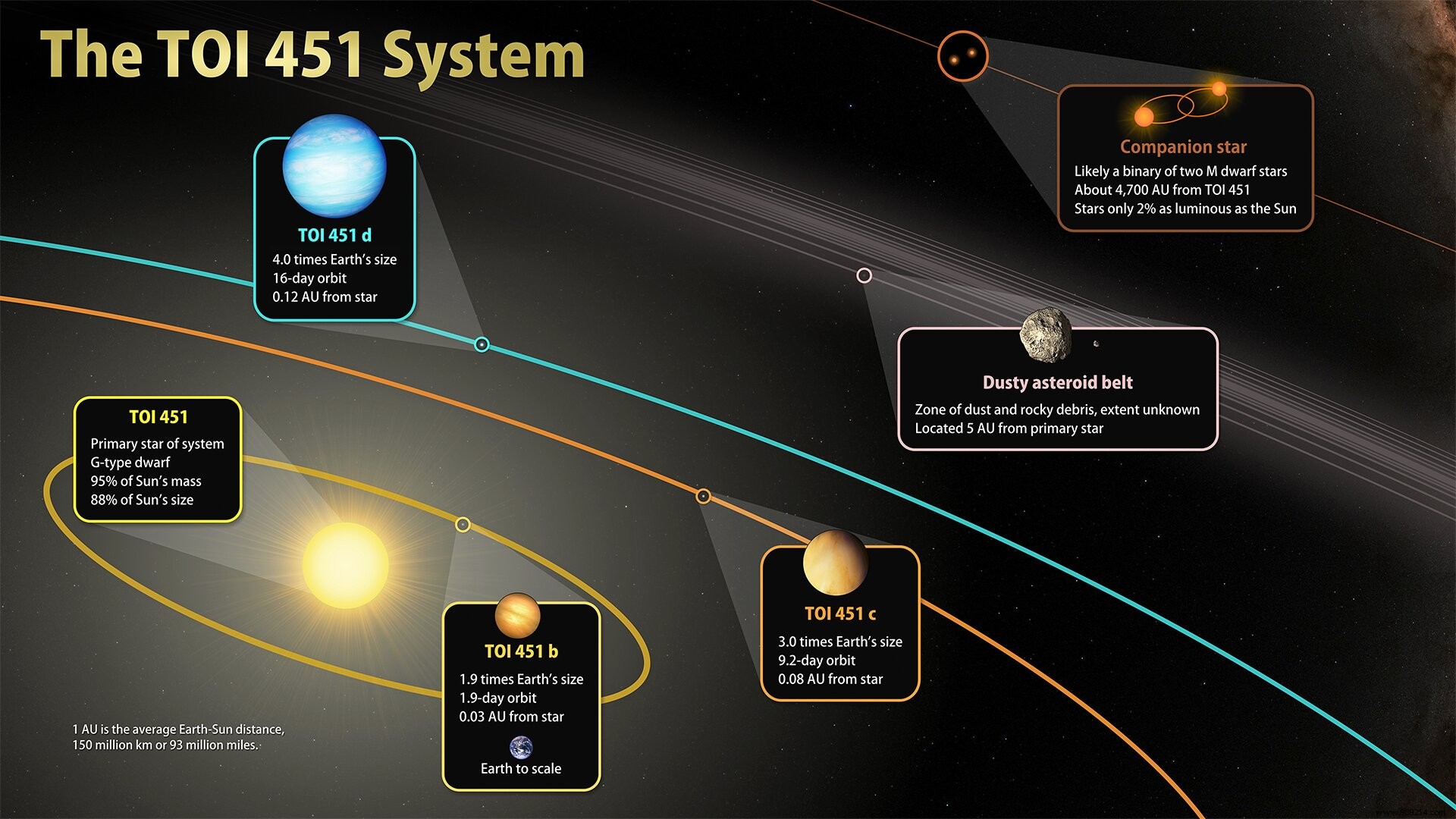A team of astronomers announces the discovery of three new planets orbiting a much younger version of our Sun. The system evolves within the Pisces-Eridanus star stream that spans more than 1,300 light-years.
Stellar streams form when our galaxy's gravity "rips apart" star clusters or dwarf galaxies. The individual stars then find themselves drifting along the orbit of their original structure, forming an elongated group of objects that gradually disperse.
Two years ago, a team from the University of Vienna came across one of these currents thanks to data from the Gaia mission (ESA). This stream named Pisces-Eridanus spans about 1300 light years , covering no less than fourteen constellations.
A few months after its discovery, researchers at Columbia University (New York) used data from the Transiting Exoplanet Survey Satellite (TESS) to analyze several stars evolving at inside. Young stars spin faster than their older counterparts. Based on the rotation period of these objects, astronomers have determined that these stars were very young, formed about 120 million years ago .
One of these stars, TOI 451, is the one that interests us today. Found only 400 light-years away of the Earth, this object indeed shelters three planets . They were identified by TESS using the transit method. As a reminder, this consists of identifying the slight and regular gradations of luminosity that occur when one or more planets pass in front of their star from our point of view.
The first, TOI 451 b, rotates its star every 1.9 days. It is about 1.9 times larger than Earth and two to twelve times more massive. The second planet, TOI 451 c, orbits every 9.2 days. It is about three times larger than Earth and between three and sixteen times more massive. The outermost and largest world, TOI 451 d, orbits the star every sixteen days. It is four times the size of our planet and weighs between four and nineteen Earth masses.
These three planets are also very hot. Even the farthest orbits three times closer to its star than Mercury to the Sun. Temperature estimates range from approximately 1200°C for the innermost planet at around 450°C for the most exterior.

While these three worlds therefore seem inhospitable, the youth and proximity of this star nevertheless make it a particularly promising target for testing theories about how planetary atmospheres can evolve .
Astronomers indeed expect worlds as large as these to retain much of their envelope despite the intense heat of their host. By measuring the light from this star penetrating the atmosphere of these planets, researchers will indeed be able to deduce their chemical composition . The James Webb Telescope, scheduled for launch in October, will normally be able to perform these analyses.
Details of the study are published in The Astronomical Journal.